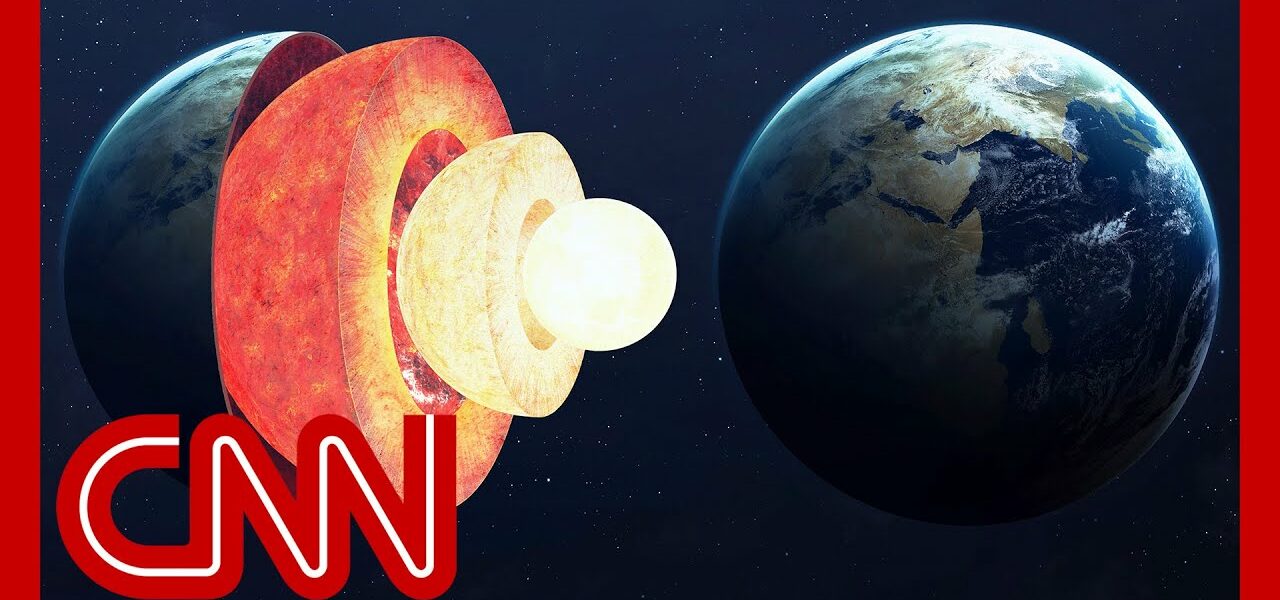The rotation of Earth's inner core may have paused and it could even go into reverse. Professor of theoretical physics, Michio Kaku, explains the new discovery with "CNN This Morning." #CNN #News
Professor breaks down why Earth’s inner core may have stopped








The paper notes that the core slows down and speeds up. The ‘stop and reverse’ is is visible as retrograde motion. As the core slows down the outer layers appear to speed up relative to the core and vice versa. The ‘stop’ is just the point in the cycle when the motion appears to change direction. We see the same thing looking at planets like Mars as the Earth moves more quickly in its orbit. The actual core does not stop nor do the scientists suggest such a thing. It was a surprise that the Professor didn’t explain this.
It’s all fake theories
@Horrifying Apocalypse Ain’t this guy on Ancient Aliens and other “History” channel shows, always talking crazy!?
You are right Tom! My husband teaches Rocket Science for a living & was in hysterics watching this so called expert explain things incorrectly. Click bait!
@Steven Burgess the entire thing is clickbait!
@C S ~ [Duke of Ramble] Thanks for the “Mercury in retrograde” analogy.
MY inner core stopped 50 years ago
Now you have no atmosphere just poisonous gases
@My Name – So that’s why I fart all day long. Thanks !
@Will P. Onya wow , you people are sick.😃😅
Activate him ! 💥💥💥Moving is life. No matter what direction. I have the feeling for much more walking and medical fitness ( 62 )
🤣🤣🤣🤣🤣🤣
The spinning of the inner core also seems to play a role in producing the electromagnetic field around the Earth. This field helps protect us from the solar wind. Over time the solar wind could strip away our atmosphere. Because Mars’ core seems to have stopped spinning a while ago it’s electromagnetic field has broken down and is very spotty. Because of this it’s atmosphere has been leaking away making it much thinner than it once was and less hospitable to life. Whether ours switches directions doesn’t seem to matter as long as it keeps spinning. Likely it will slow and completely stop like Mars one day but it is probably hundreds of millions of years away… we think. But as the professor noted it is something that needs a lot more study.
megnetic pole flips
Thanks – my head is now spinning
It apparently happens every 70 years, so no biggie.
@Dave Webster No, the polarity is not linked to the core’s spin direction. Keep in mind that the Earth’s is liquid, the geomagnetic field is produced by the core and is sum of magnetic domains in the core. As these domains move with the core, they can produce multiple localised poles, produce a much weaker global field, and reverse polarity with respected to the current condition. The geo magnetic poles do wander, and in Antarctica, the Southern geomagnetic pole is measured annually and a flag place the location each year.
A weak geomagnetic field would not be good for life on Earth, as the field directs solar winds to polar regions protecting Earth’s biosphere from a flood of ionising particles – alpha and beta radiation. Our technology and communications would also get hosed
I love this man, have for years.
Wow 😮 I also do too
@RazorBurn Shhhhh it’s okay. Shhh.
@Five_in_Five that’s so gay
So is this related to a magnetic pole shift?
No pole shifts happen once in 400,000 years. Inner cores flip once every 70 years.
@Someone Else That’s reassuring…
@Someone Else flip is the wrong word. Every 35 years the core alternates between spinning faster than the crust and spinning slower than the crust. So it appears to be switching direction when in fact it is not. Relative to the surface of the earth it is.
@Someone Else yeah
You are right
But aren’t we overdue for the 400,000 cycle
Based on the magnetic spherules
no. that’s in another periodic interval, which I can’t remember right now.
She was trying so hard to not make a misstep to show how little she knows about the earth’s dynamics, that’s ok because neither do we
Humanity thinks its gonna be here forever. When that idea should be unfathomable
of course but its still sad. It gives me an existential crisis =))) Im sure other life forms already collect information from us and we can perhaps continue on another planet / galaxy
Well, now I can stand still and wait to start walking backwards 😂
We’re going to be moon walking 🚶♂️
Were you not listening? The core moves independently from the crust of the earth, even if the core stops and reverses it’s movement, the crust of the earth will still be rotating the same way.
@Satisfied Also not the mention everything would be in reverse, like weather, sunrise and sunset, and seasons if the actual earth’s crust rotated the opposite direction…
Put the toilet lid down just in case
Clarification: Al the paper is actually saying is that at times the inner core appears to rotate a tenth of a degree per day more than the surface of the Earth does, whilst at other times it rotates about a tenth of a degree less per day than the surface of the Earth does. At no point does it stop spinning nor reverse its direction overall.
The “stop and reverse” thing is a gross over-simplification; if you could magically see through the Earths various layers and pick out a feature on the surface of the inner core, then the effect would be that sometimes theat feature would appear to be pulling ahead of you (very slowly!) as the earth spins, whilst at other times, you would be catching up with it or eaving it behind, simply due to a slight difference in rate of spin of the core.
This occurs (the paper says) because the inner core is mainly electromagnetically linked to the outer core (which tends to try to accellerate it VERY slowly) but mainly gravitationally linked to the mantle and crust (ie: everything outside of the outer core) , which tends to create a decellerating force on the inner core. I havent yet read the entire paper, but it’s likely that variations in the “dynamo” that creates the Earths magnetic field (very slow sloshing around in the outer core due to the action of its magnetic field on itself) are responsible for the changes in rotation speed of the inner core, as the overall gravitational effects of the outer layers absolutely cannot change to any measurable degree.
From everyone I did IT for that knew who the great Doctor, this man is an American treasure. I’m thankful for the stories while I map drives
He’s a quack and isn’t taken seriously by most scientists!
Wow. I hope this makes the earth great again.
The Earth is and has always been great … it’s humans thats horrible….
“It is not the aim of science to open a door to infinite wisdom, but to set a limit to infinite error.”
-Bertold Brecht
So like the movie “The Core,” I guess we have to send some scientists down there to fix it, right?
‘Don’t worry, but we really don’t know what’s going to happen’. That’s what I got out of this.
New Study! Going to the bathroom causes Global Transgender Noise Pollution!!! 💩
🤣🤣🤣🤣
We did this to ourselves with Nuclear radiation and the magnetic pulse’s ftom bomb testing
@jumbo gumbo cool. Can you tell me why you think this? I’m a bit curious.
There’s literally no way of them knowing
I am so glad that there is so much good news lately….
Wow. This is quite a revelation! Y’talk about a “clockwork orange,” so to speak, the Earth might be. But if it happens fairly regularly then there’s really nothing to worry about, but plenty to learn. Maybe it’s like the core has to UNWIND itself magnetically, and might even precipitate the expected polar flip. Good thing the core is surrounded by a liquid outer core (left out in the explanation), which means there’s little or no direct transfer of motion to the surface. Although, I wouldn’t mind an extra hour to the day.
That sounds like a reasonable explanation concerning the recent series of earthquakes along the west coast of the US.
I like how he uses “probably” a few times 😂
“Probably nothing to worry about.”
I think a lot of our “inner cores” have stopped spinning the last couple years. I feel you Earth, I really do.
Kaku is getting on in years, and he still speaks with such excited conviction. A pillar of the science journalism community